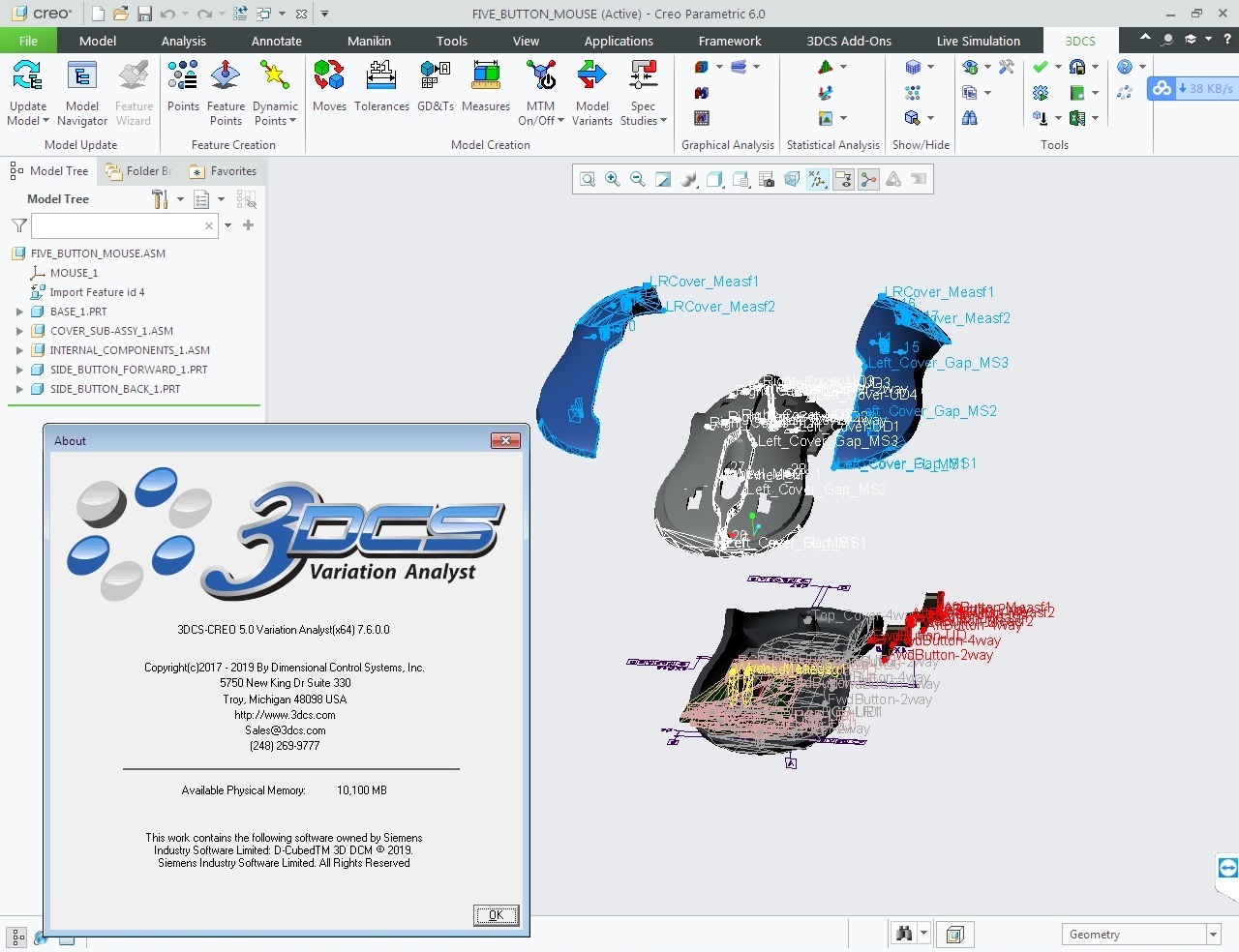3DCS Variation Analyst Overview
3DCS Variation Analyst for NX, CATIA, and Creo MultiCAD is an industry-standard analytical software that enables engineers and designers to create virtual prototypes of products. This is a powerful application that greatly simplifies the process of identifying and quantitatively measuring the effects of design variables in various stages of production. It has full integration with the CAD platforms to predict and measure the dimensional and geometric changes of components.
3DCS Variation Analyst Crack It enables designers and engineers to define, test, and modify dimensional product and process requirements in the work environment before processing. The application simulates both part and process variation, enabling the engineers to analyze their manufacturing process and how it affects both the assembly and final product functionality.
3DCS Variation Analyst 8.0.0.2 Crack It is an intelligent application that accurately detects the relationships between components and 3D collections, analyzes the variations of several different sources, and shows them the results. It also can analyze rigid collections. Making full use of 3DCS tolerance analysis can reduce the development cost of new products that are quickly brought to market and improve the performance of existing manufactured products.
The program offers users the ability to do more than just 3D stack-ups by analyzing the relationship between your parts and accounting for a multitude of sources of variation. This gives you the most accurate results to make important decisions about your design and manufacturing processes. The program is widely used in various manufacturing industries, including aerospace, automotive, medical equipment, machinery, and electronics. It also can generate comprehensive reports in a wide range of file formats such as Excel, Powerpoint, HTML and Word with one button.
Working with 3DCS Variation Analyst 7.6.0.1 for CATIA V5 R20-29 full
Description: 3DCS Variation Analyst is one of the top tolerance analysis software. This program is fully installed in the desired CAD platform and gives engineers the ability to have a realistic view of their design. Tolerance analysis is a general term for predicting and measuring dimensional and geometric changes in components. This term is commonly used in mechanical engineering and in fact refers to the process of identifying and quantifying the impact of design variables at different stages of production. Design changes are inevitable for a variety of reasons, including production constraints at various stages from concept design to sales and supply. Tolerance analysis is used to reduce the final cost of the product and minimize these changes.
In recent years, CAD software has more or less added tolerance analysis capabilities to its products, but there is still room for a complete analytical tool with a specialized approach in this area. This program and other tolerance analysis software are provided to fill this gap. The program is widely used in various manufacturing industries including aerospace, automotive, medical equipment, machinery and electronics. This software is able to accurately detect the relationships between three-dimensional parts and assemblies and analyze changes in several different sources and show you the results. This program is also able to analyze rigid sets. These assemblies are usually referred to as flexible components with large ratios, the tolerance of which is often negligible. 3DCS can also make good decisions about discarding or calculating the tolerances of these sets.
Software Description:
3DCS Variation Analyst can be used for fastanalysis of designs, but where customers find the greatest valueand savings, in both time and money, is through an in-depth processof variation analysis, using it to drive their designs early in theproduct life cycle, rather than as a validation tool after theproduct has been sent to market.
In this way, companies are finding solutions to fit and functionand non-conformance issues before production begins; thus reducingscrap, rework and warranty claims.
Most companies prefer to begin with a small pilot project, tosee the results for themselves. DCS provides these lost costsprojects as well as full dimensional engineering support, allowingcustomers to determine for themselves how much time and energy theycan put into dimensional analysis, while being able to leverageDCS’s expertise to reduce their total cost of quality.

Key Features of 3DCS Variation Analyst:
- Industry-standard analytical software that enables engineers and designers to create virtual prototypes of products.
- Greatly simplifies the process of identifying and quantitatively measuring the effects of design variables in various stages of production.
- Has got full integration with the CAD platforms to predict and measure the dimensional and geometric changes of components.
- Enables designers and engineers to define, test, and modify dimensional product and process requirements in the workl environment before processing.
- Simulates both part and process variation enabling the engineers to analyze their manufacturing process.
- Accurately detects the relationships between components and 3D collections.
- Analyze the variations of several different sources and show the results.
- Offers users the ability to do more than just 3D stack-ups by analyzing the relationship between your parts, and accounting for a multitude of sources of variation.
- Gives you the most accurate results to make important decisions about your design and manufacturing processes.
- Widely used in various manufacturing industries, including aerospace, automotive, medical equipment, machinery and electronics.
- Ability to generate comprehensive reports in a wide range of file formats such as Excel, Powerpoint, HTML and Word with one button.
System Requirements for 3dcs Variation Analyst
- RAM: 8 GB
- Operating System: Windows 7/8/8.1/10
- Processor: Intel Corei7 or Xeon Processor
- Hard Disk: 4 GB
- Office 2016/365
- Browser: Microsoft Edge, IE 11, Google Chrome, Mozilla Firefox
Please Share it. Sharing is Always Caring
Password is:www.downloadcracker.com
